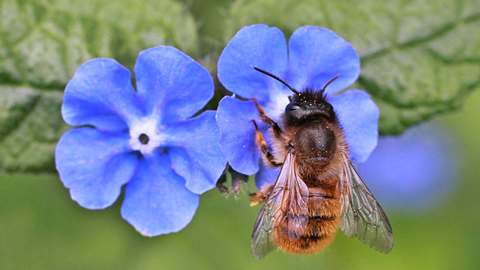
©Penny Frith
Red Mason Bee
Scientific name: Osmia bicornis
The Red Mason Bee is a common, gingery bee that can be spotted nesting in the crumbling mortar of old walls. Encourage bees to nest in your garden by putting out a tin can full of short, hollow canes.
Species information
Category
Statistics
Length: 0.6-1.1cmConservation status
Common.
